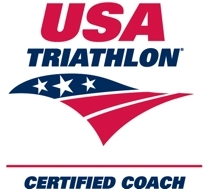
You Could Try One
How We Learn
Swim
Bike
Run
Open Water Swims
Warmup/Cooldown
Wetsuits
Tech Wear & Tri Suits
Rules
Stretching
Strength Training
Nutrition Basics
Losing Weight
Nutrition For Athletes
Race Nutrition
Race Lengths
Training, Tapering
Cramps
Creaky Knees
Gadgets
Running Shoes
Gear Checklist
Race Day
Picks & Pans
Warning Label
Marathon (the song)
Also Try Feldenkrais
Creaky Knees
Since knee pain (the technical term is patello-femoral pain syndrome) is not uncommon among long distance athletes, I thought I'd summarize the latest research findings and what I've learned over the years. These things are touched upon elsewhere in these pages, but I thought I'd summarize what we know here.
First, there have been multiple studies that show that runners have no higher incidence of arthritic knees than nonrunners. Perhaps the best known was at Stanford University, where James Fries and other researchers tracked nearly 1,000 runners and nonrunners for 21 years. None of the participants had arthritis when the study began, yet many of them developed the condition over the next two decades. As reported in the 2008 Archives of Internal Medicine, it found that the runners' knees were no more or less healthy than the nonrunners' knees. (However, the study did find that runners experienced less physical disability and had a 39% lower mortality rate than the nonrunners.) So while painful knees is an issue for runners, it's an issue for sedentary people as well. Running does not grind away your knee. In fact the more you use a joint the healthier it's likely to be. The lubrication of a joint happens through movement. Immobilize a joint long enough and you won't have a joint. The pain runners experience is due to stresses on the tissues supporting the knee.
Too Much Landing Stress
The point here is that you can inflame the tissue around the knee by improper usage. The most common way of doing that in running is landing with your leg straight and extended in front of you. Landing with the leg bent and the foot underneath you diminishes the force of landing applied to the knee by a range of a third to a half. I talk about this in the section on running.
Torque Into The Knee From The Way You Move
There's a page here on my experience with the Feldenkrais Method. I learned to move better and that allowed me to avoid the torque into the knee that was causing me problems. I feel compelled to mention that this sort of experience is "anecdotal." There hasn't been any large scale research study to show what percentage of people would be helped by this approach. But I know it did wonders for me.
Pills
For a while there some people were claiming glucosamine sulfate would help. Then researchers did a controlled study and came to the conclusion it wasn't doing much better than a placebo. These days you'll typically find it available in a mixture with chondroitin sulfate and MSM. Maybe one of the three might help some people. Who knows? But there's not a whole lot of scientific evidence to support it.
Strength & Flexibility
In a study at the Defense Medical Rehabilitation Centre in the United Kingdom by Russell Coppack and colleagues and reported in the American Journal of Sports Medicine, they found that a regimen of leg strength and flexibility exercises decreased knee pain incidence in military recruits by 75%.
At the University of Clagary researchers took runners experiencing knee pain and had them do strength training exercises for their hip abductors (moving the leg away from the center line). After three weeks the runners reported less pain. I think this one's important and it's not at all obvious why it might help. I mean, do you lift your leg to the outside as you run? No. So why would strengthening you abductors have anything to do with running? Well, every time your foot lands it pronates a little, rolling a degree to the inside. If your core is unstable, if you have no strength in your legs, that pronation will cause your knee to twist inwards. Strong abductors (and strength in your core and upper leg muscles) can prevent the leg from bending inwards at the knee.
At the University of North Carolina at Chapel Hill researchers followed nearly 1,600 midshipmen from the U.S. Naval Academy. The midshipmen were first evaluated using motion analysis and strength testing. As reported in the November 2009 issue of the American Journal of Sports Medicine, 2.5 years later 24 women and 16 men had developed bad knees. Weak hamstrings and quadriceps increased the probability of developing runner's knee by 2.9 times for women and 5.5 times for men.
Do you see a pattern here? The stronger the support system in your upper legs, gluteal muscles and core muscles of your trunk, the less strain on the knee. If you read my story on the Feldenkrais Method and how it fixed my knee, you'll read that the quadriceps exercise I was given didn't help, and in fact made things worse. And yet it's clear to me the strong quads can help. But if all you do is focus on the quads, you're missing the point. All the muscles of the leg and trunk need to be strengthened. Plus the quad exercise I was directed to do was full range, which just aggravated the knee problem and I remember it hurting my back. But I've run across a better version of the quad exercise worth passing on. Don't do a full range of motion. Straighten the leg against resistance until it's fully extended, hold it there a few seconds, drop the leg just 6 inches and again hold for a few seconds, then extend again, hold fully extended and so on. This way you avoid bending the knee to 90 degrees which is the range where most people feel the most pain. This will avoid aggravating the tenderness.